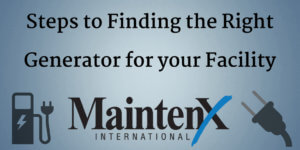
What size generator do you need? This is a common question, and finding the answer may seem like a fairly difficult undertaking. But most of the time, it’s actually pretty straightforward. Let’s break it down to the basics.
Step 1: Getting the power information for your appliances
First, you’ll need to figure out the ‘continuous’ and ‘peak’ wattage needed for each of your appliances. Continuous refers to power consumption during normal operation, peak refers to consumption during high-intensity activities light igniting, starting, etc. For certain appliances, they will be the same (things like TVs, lights and laptops).
But for appliances with electric motors or heating elements, the starting wattage can be as much as four times the continuous wattage: fridges, air-conditioners, microwaves, coffeemakers, drills, grinders, saws, etc. Appliances like these have motors or heating elements that surge and then drop back down to a lower continuous amount of energy consumption.
Step 2: Know Your Requirements
Simply going to a store and picking up the cheapest generator in stock is clearly not a good idea. It’s a much better idea to do a deep dive into your power generation requirements before making a selection. So, how do you do this? Follow these steps:
1. Make a list of the appliances your generator needs to power
2. Make a list of the starting and continuous wattage of these appliances
3. Calculate the total energy requirements in either KVA or KW
Step 3: Buy and Install your Generator
Now that you know your power requirements, you can shop around for generators that fit your wattage and budget requirement.
But, a note of caution: Unless you are a licensed electrician, make sure you hire one to safely install your generator and transfer switch for you!

